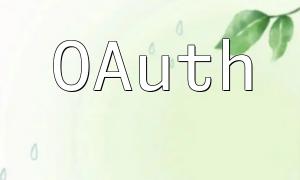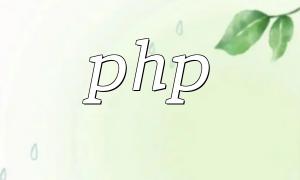A web crawler is an automated tool used to fetch data from the World Wide Web. PHP, as a popular server-side scripting language, offers a wide range of libraries and functions that allow for easy parsing and handling of HTML or XML data. In this article, we will walk through an example of creating a web crawler using PHP, and show how to fetch and parse web content efficiently.
The first step for a crawler is to fetch the content of the target webpage. In PHP, we can use the `curl` function to achieve this easily. Below is an example of how to fetch web content:
$url = "http://example.com"; // Set the target URL
$ch = curl_init();
curl_setopt($ch, CURLOPT_URL, $url); // Set the URL to crawl
curl_setopt($ch, CURLOPT_RETURNTRANSFER, true); // Return the content as a string
$output = curl_exec($ch); // Execute the curl session and save the content
curl_close($ch);
echo $output; // Output the fetched web content
In this code, we set `CURLOPT_RETURNTRANSFER` to `true` so that the fetched content is returned as a string. Then, we use the `curl_exec` function to execute the curl session and save the output, which is then displayed using `echo`.
Once the web content is fetched, the next step is to parse the HTML to extract the required data. PHP has many libraries to handle HTML, and one of the most popular ones is Simple HTML DOM. Here's an example of how to parse HTML using Simple HTML DOM:
include('simple_html_dom.php'); // Include the Simple HTML DOM library
$html = str_get_html($output); // Load the fetched content into a Simple HTML DOM object
<p>// Find all the links and output them<br>
foreach($html->find('a') as $element) {<br>
echo $element->href . "<br>";<br>
}</p>
<p>$html->clear(); // Clear the Simple HTML DOM object from memory<br>
In this code, we first include the Simple HTML DOM library using `include`, and then load the fetched web content into a Simple HTML DOM object using `str_get_html`. We use the `find` method with a CSS selector to find all the links, and then loop through each one to output its `href` attribute. Finally, we clear the object from memory with `$html->clear`.
In addition to HTML, PHP can easily parse XML content. PHP provides a simple and easy-to-use library, SimpleXML, to handle XML data. Below is an example of how to parse XML using SimpleXML:
$xml = simplexml_load_string($output); // Load the XML string into a SimpleXML object
<p>// Iterate through the XML and output specific fields<br>
foreach($xml->book as $book) {<br>
echo "Title: " . $book->title . "<br>";<br>
echo "Author: " . $book->author . "<br>";<br>
echo "Year: " . $book->year . "<br><br>";<br>
}<br>
In this code, we use the `simplexml_load_string` function to load the fetched XML string into a SimpleXML object. Then, using a `foreach` loop and object properties, we iterate through the XML content and output the title, author, and year of each book.
By using PHP's `curl` function and libraries like Simple HTML DOM and SimpleXML, we can easily create a web crawler and extract data from web pages or XML files. This provides strong support for building various data-driven applications. Through this tutorial, you can quickly grasp the fundamentals of PHP crawler development and apply them to more complex data extraction tasks.
Related Tags:
HTML








